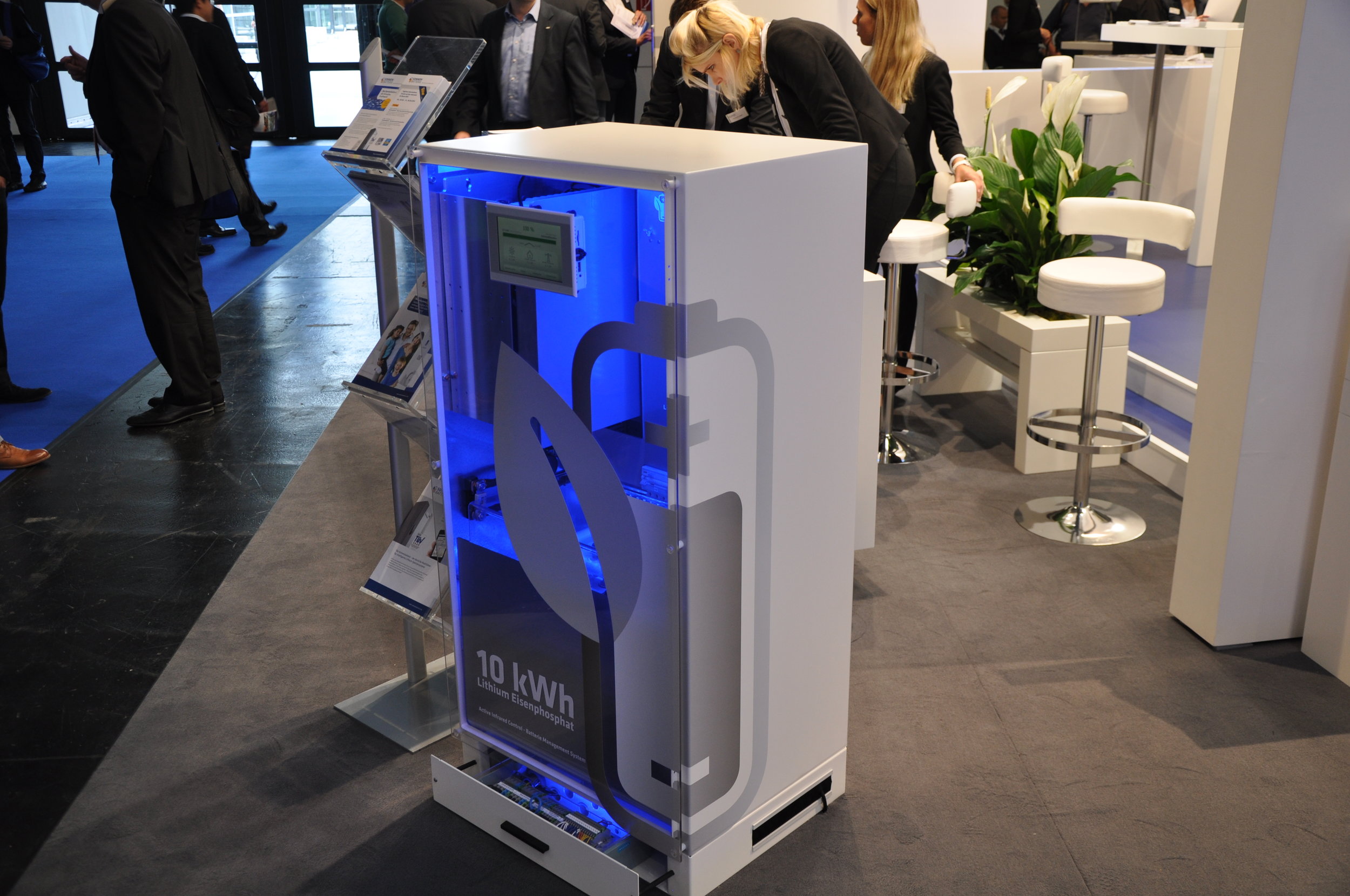By Lou Covey, editorial director
The electrical energy storage industry continued to grow in credibility this week at the Intersolar 2015 conference with a co-located show in Moscone West. However, as a possible indicator that it is still a very small market, the Intersolar folks put the show name all in lowercase (ees).
The sector is set to see the installed base grow 250 percent by the end of 2015, year to year, according to GTM research , but according to other reports, that represents a total investment of $2.6 billion world wide. As a comparison, Solar energy installations represent an investment of $172 billion as of the end of last year. The industry has no where to go but up.

There is no obvious leader rising in the ranks, except by general impression. Until this year the industry has done very little to distinguish itself until Elon Musk announced in May that Tesla will be offering home and industry storage products “real soon,” which was enough for lots of wealthy people that have electric cars and solar panels to put down a big chunk of cash to get their systems… sometime next year (A fool and his money…).
The reality is that the industry has been around for some time and selling products around the world relatively profitably, without a clear leader in the market. One would think that the attention being paid to the Tesla announcement might give them cause for jealousy, but that was not the case at ees. Every single company offering a storage system (and there were many) were practically salivating over their prospects.
“We are selling proven products with higher capacities and lower cost now than what Tesla says they are going to sell,” said Stefanie Kohl, marketing director of Sonnen-Batterie. “We made a decision to enter the US market early last year, and when Tesla made their announcement it was a nice gift to our marketing budget. Now everyone knows what it is and we can provide a better product for a better price." Being first to market is not always best.
Most companies offering storage products at ees called themselves a “market leader” for one reason or another, and Sonnen-Batterie calls itself “the German market leader.” It sold close to 4,000 units of its intelligent energy storage system to home owners, farmers and businesses since entering the German market in 2011. Germany has approximately 1.5 million solar installations currently and more coming every day, so Sonnen-Batterie has a way to go before they reach market saturation, but it seems a good start.
The investment community thinks so, too. Last December, Dutch and German investors sank put up $10 million to fund expansion.
The issue to be resolved is still cost per watt. Storage systems make sense for companies and residential applications when there is money to be spent. With solar installations producing power at $0.33 per watt, they are a pretty good deal over peak power costs from utilities, which is around $0.85 per war between noon and 6 p.m. But adding a storage system can make it a wash or even end up costing more.
So like all alternative energy technology, storage technology is still the realm of the wealthy. But it is a good start in the right direction.
